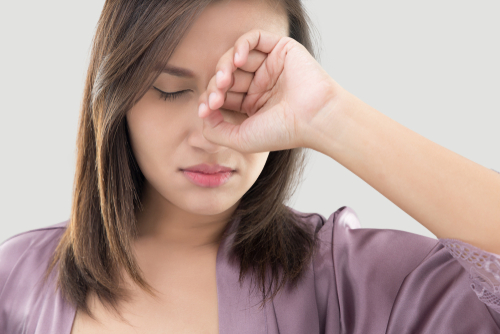
Blepharitis is an inflammation of the eyelids that usually occurs due to infections, skin reactions, or allergies. Although blepharitis rarely affects your eyesight, the condition which generally affects both eyes can be chronic with no permanent cure.
The good news is that its symptoms can be improved with proper treatment and maintaining eyelid hygiene daily. Keep reading to learn more about blepharitis!
Symptoms of Blepharitis
Some of the symptoms of blepharitis include:
- Red, puffy eyelids that look greasy
- Experiencing a burning sensation in your eyes
- Itchiness or grittiness
- Sticky discharge coming from your eyes
- Having crusts that develop at the base of the eyelashes
- Scales or tiny flakes may appear on the eyelids
Blepharitis Complications
Blepharitis is an uncomfortable condition, but it’s rarely serious. The following are some of the possible complications of blepharitis:
Stye
When the root of your eyelash is infected, the result is a stye. The painful infected swelling is found on the outside of the eyelid.
Discomfort wearing contact lenses
A flare-up of blepharitis can make wearing contact lenses feel uncomfortable.
Meibomian cyst
This painless swelling is due to a blocked meibomian gland. The cyst is mainly found inside the eyelid.
Having a bulge from the cyst causes your eye to look swollen and unsightly. At times, the swelling can become painful and infected, but it’s treatable.
Conjunctivitis
Conjunctivitis is inflammation of the front of the eye. This can lead to sore and red, watery eyes with discharge.
Issues with eyelashes
In the long-term, you can lose eyelashes, they may discolor, and your eyelashes could misdirect, causing them to move towards the eye.
Keratitis
Keratitis, an inflammation of the cornea, can affect your eyesight.
Eyelid ulceration
While rare, you may develop eyelid ulceration. This can cause your eyelid to turn outwards or inwards.
Treatment for Blepharitis
Blepharitis treatment aims to control the condition. Typically, inflammation due to blepharitis recurs if you don’t keep up with treatment.
With frequent medical management of the condition, you can minimize blepharitis symptoms, allowing you to avoid flare-ups. Your eye doctor can prescribe artificial tear drops and antibiotics to control blepharitis.
Another way to find relief from the condition is ensuring your eyelids are clean. Keeping your eyelids clean is a crucial part of blepharitis prevention and treatment.
Cleaning your eyelids removes debris, unblocks the meibomian glands, and clears stagnant secretions from the glands. If you wear contacts, you should first remove them before performing this daily routine. Cleaning your eyelids entails:
Warmth
Gently press a warm face cloth on your eyelids for 5 to 10 minutes. Once it cools, re-warm it in warm water.
Alternatively, you can place a reusable heat bag over your eyes for roughly five minutes. The warmth softens the skin around your eyelids and any crust that may have attached to them.
It also unblocks the meibomian glands, enabling the oily fluids to flow freely.
Massage
After applying the warmth, massage your eyelids immediately. Massaging them pushes out the oily secretions from the meibomian glands.
With your eyes shut, massage along the length of the lower and upper eyelids towards your eyes.
Repeat 5 to 10 times for about 30 seconds. The massage should not be too hard or gentle but comfortable enough.
Clean
The final step is to clean your eyelids using clean water or an eyelid scrub that you can purchase from your eye doctor.
Want to learn more about blepharitis or find out if you have this condition? Schedule an appointment at Morganton Eye Physicians by calling 800-222-3335!
